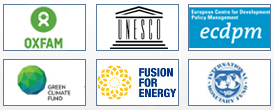The Employee Lifecycle Problem Faced by European Trade Associations in 2022

The foundation of practical human resource management is underpinned by a linear understanding of the employee lifecycle. However, this functional delivery of process informed HR generalism has a nuanced character flaw. This article will seek to explore the dynamics of the employee lifecycle, in the context of trade association bodies and the wider sector trends and pressures, and how it can benefit from an organisational and cultural shift from process to person-centred delivery.
What Does "People-centred " Mean?
Many organisations have shifted towards people-centred culture and leadership experiences. The idea is that happy employees make for productive employees. This focus can value the happiness of employees whilst focusing on the bottom line. Organisations like Marriott, Apple, Virgin and Google are achieving positive measurable outcomes by adhering to such values. But how can this experience of people-centred HR lifecycle delivery survive the demanding pressures and realities of the SME landscape?
Re-imagining The Life Cycle
Many will identify small business HR as hierarchical and bureaucratic - with HRM being a means to a legal end (with that enc being regulatory alignment). However, people-centred HR lifecycle experiences within small- and medium-sized businesses should aspire towards an alternative reality. This means building a people-centred model which places flexibility and responsiveness at the forefront of their leadership and development cultures.
This agility can be further enhanced by unprecedented digital automation within business information management technologies and HR Cloud solutions. This experience can be increased further by changing demographic realities whilst older workers remaining in the workplace longer and the greater intergenerational skill exchange this continuation of older workers will help deliver. These two elements - technology and demographics - drive two other key components of a people-centred HR lifecycle experience. The ability to lower transaction costs whilst simultaneously creating avenues for greater connectivity.
Making HR Strategy Accessible to SME HR Environments
All of this, ultimately, sounds grandiose and hifalutin as, for example, a small light industrial manufacturer with 20 employees focused on a growing cost of living crisis, inflation and greater costs doesn't have the time to undertake a deepdive into the minutiae of human capital lifecycle modernity. This is where McKinsey amp; Company have identified a more realistic and tangible term - "antifragile."
Be "Antifragile"
The antifragile doctrine renders competitors as "ecosystem collaborators" whilst individual companies think of themselves as humans who value inspiration, creativity, and collaboration. This trifecta is the foundational intersection through which antifragile HR lifecycles focus on people, groups and enjoyment. All of which helps improve the bottom line whilst prioritising more than profitability instead they are strengthening their business in order to counter societal fragility.
Bitesize Steps for Trade Association Recruitment Success
By focusing on the big picture, global trade bodies or trade associations can spend more time advocating for their industries, instead of focusing on the HR process as a means of attracting, onboarding and retaining talent all through antifragile planning. Planning and delivery that puts humans first, technology at their fingertips, improving connections for all, whilst at the same time creating a happy environment that pushes transactional costs down whilst pushing up employee happiness.



